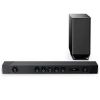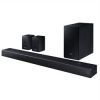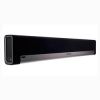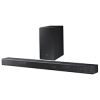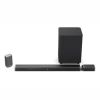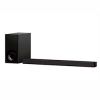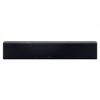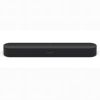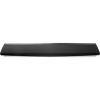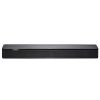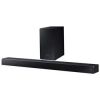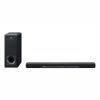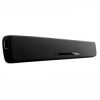| Overall | Audio features | Streaming services | Connectivity | Features | Multichannel surround | |||
|---|---|---|---|---|---|---|---|---|
| Samsung HW-Q90R | 8.2 | 9 | 5 | 7 | 10 | 10 | See price | 47 |
| Samsung HW-N650 | 7.6 | 7 | 10 | 7 | 8 | 6 | See price | 18 |
| Sonos Beam | 6 | 6 | 6 | 6 | 8 | 4 | See price | 4 |
| ZVOX SB380 | 4 | 6 | 0 | 4 | 4 | 4 | See price | 25 |
A soundbar can be a good addition to TV speakers, especially if you are having trouble understanding voices in TV shows and movies. It's also a great way to improve your listening experience when listening to podcasts or audiobooks when you want to stream this content wirelessly. Some soundbars make dialogue easier to understand and clearer to hear something important in fast flow, while others can make voices more dirty and cluttered. So how do you know which soundbar is the best soundbar for dialogue? You will need something with a well-balanced stereo frequency response, and a dialogue enhancement feature may also help.
The main destination of such devices:
- problems understanding voice in TV shows and films
- improve perception when listening to podcasts or audiobooks
- enhance the clarity of speech in tracks when you want to cast that content wirelessly
- people who have significant hearing problems
We tested a lot of soundbars, and below are our recommendations for creating the sound system with a decent speech clarity.
Soundbar for dialogue reviews
Samsung HW-N650 - best overall

This model from the famous company is the best soundbar for dialogue clarity available for today. There are 3 speakers in the front of the device. The soundbar is long enough to make the extreme speakers be perceived precisely as left and right. In the center, respectively, central. Two more are located in the upper part of the panel. They play in the direction "up-side."
Sound waves that come out of 56 holes on the top panel of the soundbar are reflected from the walls and ceiling. This creates the impression of an ambient sound. For bass, there is a separate subwoofer that connects wirelessly. If you need real 5.1 sound, you can buy a set of rear speakers SWA-8500S to the soundbar and connect them wirelessly.
The main function of the Samsung HW-N650 is to work with a source of high-quality sound, and primarily with a TV. The panel is flat enough to fit under any screen. At the same time, the soundbar can also serve as an ordinary music center. It has a USB connector, where you can connect a USB flash drive, as well as Bluetooth for connecting with mobile devices.
Connection and control are complicated by the lack of a full-screen mode: it is very small and hidden under the grid on the right side of the soundbar. To be precise, this is not a display, but an alphanumeric indicator. Nevertheless, we connected via Bluetooth without even reading the instructions - the algorithm is quite standard.
With TVs, everything is also simple: in addition to conventional HDMI, there is an optical and RCA connector, so you can connect even the most advanced model. The most logical way to control the soundbar is to use remote control, and if you have one of the compatible Samsung TVs, it could be a remote control from the TV itself. In extreme cases, the main buttons are located on the side panel of the soundbar.
Another option is to download the Samsung Audio Remote app and control it on your smartphone. In fact, it has the same buttons as on the remote. 
The impression of the sound is largely dependent on the quality of the original content, but even the MP3 track from the smartphone connected via Bluetooth sounds impressive. Our main test was the reproduction of sound in one of the action movies (4K Blu-ray format with Dolby Digital). Obviously, the surround sound quality can be influenced not only by the arrangement of sound devices but also by the room’s environment: the more furniture, the less predictable sound waves are reflected from them.
The N650 uses a 5.1-channel speaker configuration with the claimed frequency range from 42 Hz to 20 kHz and the total power of 360 watts. The N650 supports 5.1 channel versions of both Dolby Digital and DTS, but cannot decode lossless formats and thus does not support Dolby Atmos or DTS:X.
If you're a gamer, the N650 has a great feature designed specifically for you. The N650 has three sound modes: Standard, Surround, and the aforementioned Game.
Key specs
- Built-in channels: 5.1
- Separate subwoofer (in package): yes
- Bluetooth: yes
- Size (Wx H x D), cm/in: 109.2 x 5 x 7.6/43.3 x 2.3 x 3.9
- Official website
- Full specs
Pros
- You can add 54W semi-wireless rear speakers to make it 5.1
- I find the clarity of dialog to be high and the positional audio to be immersive
Cons
- I had some issues with HDMI ARC, and with pairing the additional rear speakers(8500s), took a while to start working properly
ZVOX SB380 - best budget

Soundbar SB380 was created by the designers of the American company ZVOX Audio. It features a built-in active subwoofer. AccuVoice proprietary technology increases the intelligibility of dialogs. The soundbar is suitable for TVs with a diagonal from 37 to 65 inches.
This device is the best tv soundbar for hearing impaired in terms of the budget-quality ratio. In an effort to reduce the cost of the device, designers used a smaller amplifier, removed one of the input connectors and the ability to connect via Bluetooth - the latter, according to one of the company’s leaders, was made possible thanks to marketing research that showed that this feature is almost not in demand by home cinema lovers.
The creators stated the following: “Few people use Bluetooth to transfer audio from smartphones to the TV’s audio system when most TVs and Blu-ray players have the Spotify and Pandora apps built-in.”
Technical characteristics of the soundbar: frequency response 45 Hz - 20 kHz, amplifier power 45 W, built-in active 4-inch subwoofer, three wide-band two-inch speakers. A simple setup that the user can make allows you to control the soundbar using an IR remote control.
The ZVOX SB380 has a built-in 4-inch subwoofer and three broadband speakers. The ZVOX SB380 includes several audio features that help improve dialogue. The SB380 uses AccuVoice's "dialogue enhancement technology" to make dialogue louder and clearer. It also has an output equalization system that “tames loud commercials,” and PhaseCue's virtual surround sound “delivers 3D surround sound.”
The ZVOX SB380 is compact enough with a slim aluminum case measuring 35.5 x 5.7 x 3.3 "d. It's not a shabby plastic speaker, but unfortunately, it's also quite soft and ordinary. The good news is that although Its design is not very impressive, its rectangular appearance is clean enough and minimalistic to fit with almost all home theater settings. The front display is hidden under the stripes, text and numbers are highlighted when changes are made. It is easy to see where you are related to the maximum volume. 
The soundbar can be connected to the TV using two optical digital inputs or one analog input (RCA jacks). The system lacks Bluetooth, Wi-Fi, and other wireless connections. The remote control is turned on, but the soundbar should also work with most remote controls.
It can be placed in the low-profile rear position, making it the perfect complement for low-stand TVs. It can also be installed, so overall the SB380 can be installed in three different ways. None of these three methods provides for the installation of a subwoofer - the ZVOX SB380 is a simple monoblock system that does not require any external units.
Key specs
- Built-in channels: 3.1
- Separate subwoofer (in package): no
- Bluetooth: no
- Size (Wx H x D), cm/in: 88.9 x 12.7 x 7.6/35.5 x 5.7 x 3.3
- Official website
- Full specs
Pros
- Slim and relatively compact single-piece unit
- Can operate in multiple positions
- Offers superb clear dialogue, priced well, strong but balanced bass
Cons
- No wireless features
- Remote buttons are a bit small, and the correct buttons may be hard to find by feel in a dark room
Samsung HW-Q90R - best performance

The next reviewed unit is the best soundbar for voice clarity according to performance features, and here is why. Samsung's HW-Q90R soundbar is the flagship model of 2019 among similar devices with an additional subwoofer. The uniqueness of this soundbar is that the specification contains Dolby Atmos and DTS:X.
The user receives 510W of sound power, qualitatively distributed over a complex configuration, including a wireless subwoofer and two wireless speakers, which should be located behind the seat. With the proper arrangement of all emitters, you will enjoy the excellent sound.
Often, high-quality Atmos-enabled sound panels use the reflection of sound waves from walls and ceilings, giving the impression that the sound effect when watching movies comes from all directions.
The plus is that manufacturer provides the necessary settings so that you can manually optimize the sound system. This can be done using the smooth volume control. Here you can control various channels separately. For example, you can make the center channel louder (dialogs will be more receptive) and set the front and rear channels in the correct ratio.
The soundbar often serves not only to sound the TV but also to play regular music content. Samsung's old soundbars supported various streaming options through its own application, but over the years, the Korean brand has changed course.
Now the HW-Q90R does not have a separate built-in sound application because (according to the manufacturer’s idea), the soundbar is connected to the SmartThings application, which gradually unites all Samsung products. They are all displayed in the SmartThings app.
If you have already stocked up with such a “hub” SmartThings (for example, on a TV), then the soundbar will be added here without any problems. Unfortunately, there is no streaming in SmartThings. However, the Samsung HW-Q90R soundbar has some features for this. In addition to the Bluetooth channel on board, there is "Samsung Spotify Connect." This is a DLNA compatible service.
The elegant, narrow remote control of this soundbar is very similar to the remote control for Samsung TVs. It is beautiful, well thought out and comfortable in hand. The display in the soundbar is minimalistic. Just when you press the button on the remote control, you will see where the HW-Q90R display is. 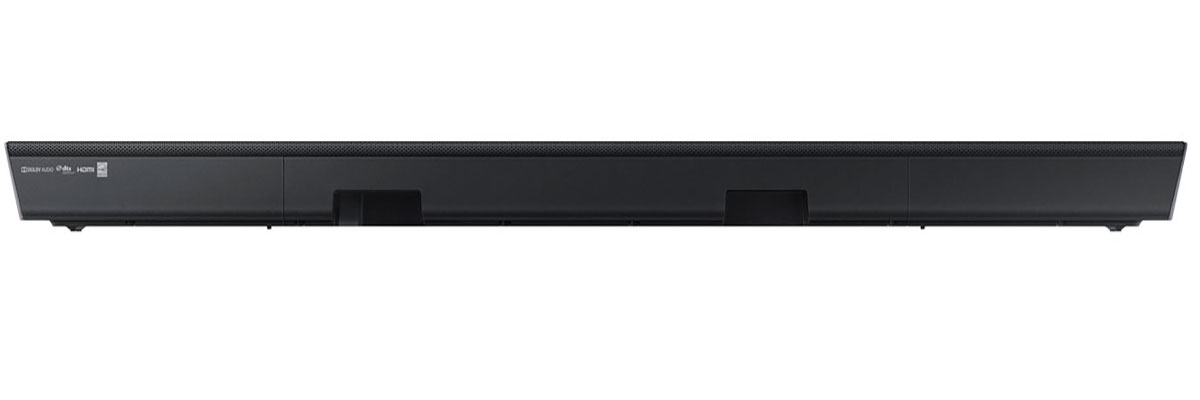
A small and inconspicuous screen is hidden behind the speaker grill, so when watching movies, it does not distract. On the other hand, the font size on the screen is well readable. There is one comment, and it concerns the menu. When you are in the settings, sometimes you have to wait until the full word is displayed in a creeping line.
Since the considered soundbar is premium, the soundbar HW-Q90R should have a sufficient number of interfaces. You can connect to a TV via HDMI with ARC, although it is also possible to connect via an optical cable. In addition, there are a couple of additional HDMI inputs to which you can connect a decoder, game console, or UHD Blu-ray player, for example, Oppo UDP-203 or Xbox One S.
Key specs
- Built-in channels: 7.1.4
- Separate subwoofer (in package): yes
- Bluetooth: yes
- Size (Wx H x D), cm/in: 122.4 x 8.1 x 13.4/48.2 x 3.2 x 5.3
- Official website
- Full specs
Pros
- The overall built quality is all premium. A metal finish to the edges and rear while still keeping it simple (not flashy), makes this a valuable accessory for your television
- Because of identical drivers, it’s easier to move the speakers around the three-dimensional soundstage without noticeably changing character from speaker to speaker
Cons
- The soundbar is very heavy. You’ll need some support if you want to wall-mount it
Sonos Beam - compact
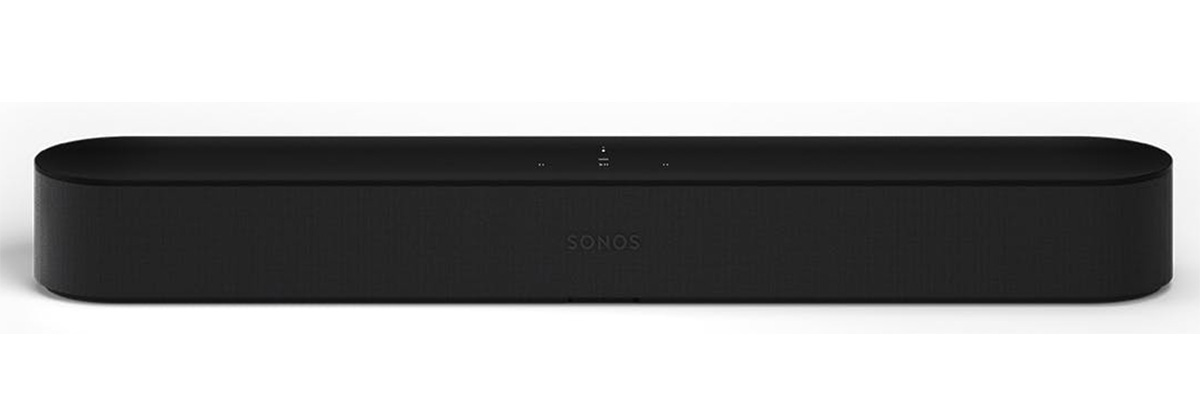
The length of the device is only 650 mm, with a depth of 100 mm and a height of 685 mm. Such dimensions are more typical for sound TV stands than for soundbars. These features make this device very compact. The fabric mesh wrapped around the body of the Beam soundbar - just like the very inexpensive models of competitors - looks rather unusual for Sonos equipment. However, the plastic top panel and touch controls are already familiar to us from the One model.
Thanks to its switching capabilities, the Sonos Beam is superior to the PlayBar. The presence of an HDMI input with ARC support, which now appeared on the Sonos soundbar, was sorely lacking in the older model. This can be done about switching because, in addition to the Ethernet connection and Wi-Fi module, this device has nothing. An HDMI cable with ARC support is all you need to connect.
With this connection, all control of the audio system can be carried out from the remote control of your TV. Like all other Sonos devices, the Beam soundbar does not have its own control panel. Do not forget to indicate in the TV settings that the sound should go to the corresponding HDMI output. The lack of a Bluetooth connection is a little disappointing. Sometimes this is more convenient than running the application.
The device emits sound in system 3.0. Like modern AV receivers, Beam can adjust the character of the sound to the characteristics of the room. Own sound calibration system - Trueplay using a special application for iOS mobile devices allows you to adjust the sound of the system. The principle of operation is somewhat similar to the Audyssey system. 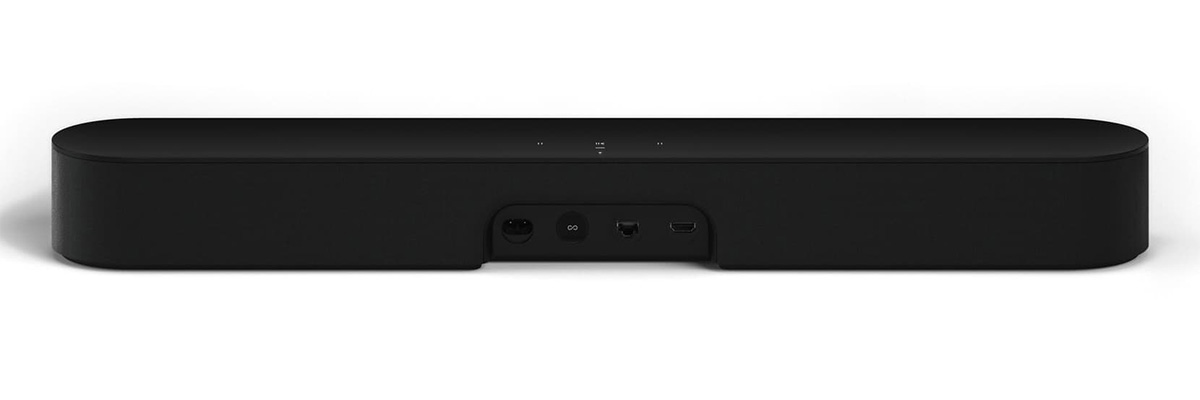
To organize a complete 5.1 system, you can connect a pair of rear channels to the Sonos Beam in the form of wireless Sonos Play 1. If you want to strengthen the low-frequency component, you can always add it to the Sonos Sub system.
Sonos calls Beam "the most advanced soundbar." The principle of operation of this speaker is based on the direction of the sound to the walls, with its subsequent reflection. The soundbar is equipped with two woofers for the center channel, one for the left and right stereo, and a tweeter. Also on the front of the Sonos Beam are two passive radiators and another on the back.
Key specs
- Built-in channels: 3.0
- Separate subwoofer (in package): no
- Bluetooth: yes
- Size (Wx H x D), cm/in: 65 x 6.8x 10/25.6 x 2.7 x 3.9
- Official website
- Full specs
Pros
- Sonos Beam supports several voice assistants, including Amazon Alexa and Google Assistant
- The sound picture is wide enough to fill a small room
- The HDMI interface provides the ability to turn on and control the TV using voice commands. Apple AirPlay 2 support will appeal to iPhone owners
Cons
- The absence of a subwoofer in Sonos Beam makes its soundless bass than competitors equipped with subwoofers
- Connectivity will be limited with TVs that do not support ARC Audio Return Channel
-
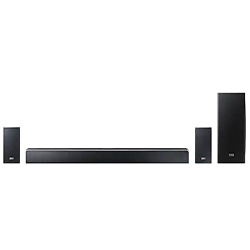
Samsung HW-Q90R
- Samsung
- | 1800
- 1662
-

Sonos Beam
- Sonos
- | 400
- 3280
-
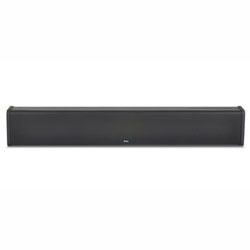
ZVOX SB380
- ZVOX
- | 200
- 581
-
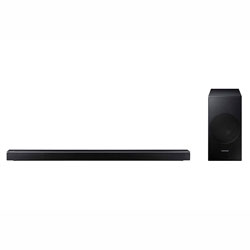
Samsung HW-N650
- Samsung
- 68
Popular soundbar comparisons
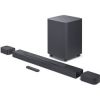
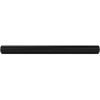
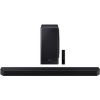
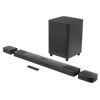

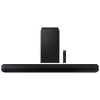


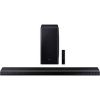
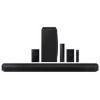

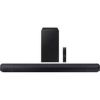


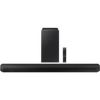





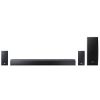



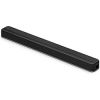
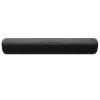


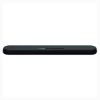
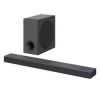


Recent reviews
